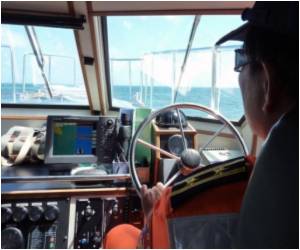CSIRO of Australia has launched a new monitoring system that could help protect the eco system of the ocean waters surrounding the state of Tasmania.

“This complex environment has strong seasonal variation and many offshore islands, submarine canyons and seamounts that support unique biodiversity and productivity hot-spots.
“It is also a region where there has been rapid change in both oceanography and biodiversity, offering a great opportunity to characterise and understand how Australian marine ecosystems may respond to climate change.
“TasIMOS has planned the observing system in Tasmania’s oceans so that these challenges can be addressed in joint research by CSIRO and the Institute of Marine and Antarctic Studies at the University of Tasmania.”
The TasIMOS observing system will:
provide real time data from the Maria Island National Reference Station;
Advertisement
detect a range of tagged marine animals using curtains of acoustic receivers; and
The datasets will help scientists underpin a whole-of-system approach to managing aquaculture and fisheries resources and biodiversity, including marine reserve management.
Leader of TasIMOS, Dr Peter Thompson of CSIRO, said the datasets will support the development of regional and local models of oceanography, nutrient cycling and ecosystems.
“IMOS data will allow Tasmanians to better manage their marine resources,” Dr Thompson said.
“Scientific assessments of the current state of valuable marine resources, and of likely future states of those resources, will be dramatically improved.
“For example, repeat surveys at sites along the Tasmanian coast will track the progress of the spiny sea urchin, a serious threat to Tasmania’s rock lobster industry.”
Dr Thompson said IMOS data already show the Tasman Sea is warming much faster than other places in the world.
“The new IMOS observational capabilities will make it possible to understand why this is so and its likely future impacts on the marine ecology of Tasmania.
“We are investing now, but the value of these sustained observations grows every year and they will be even more valuable to future generations.”
style="mso-special-character: line-break">
Source-Medindia









